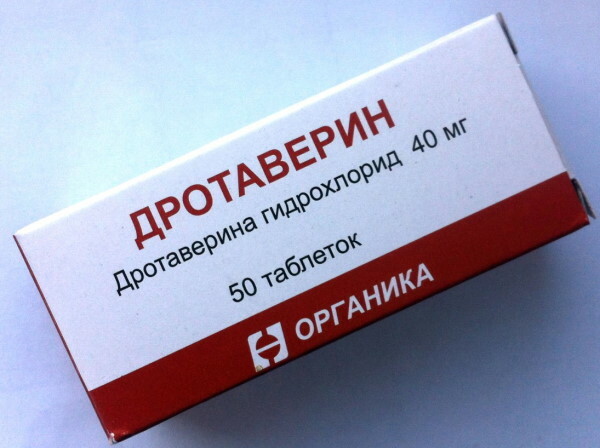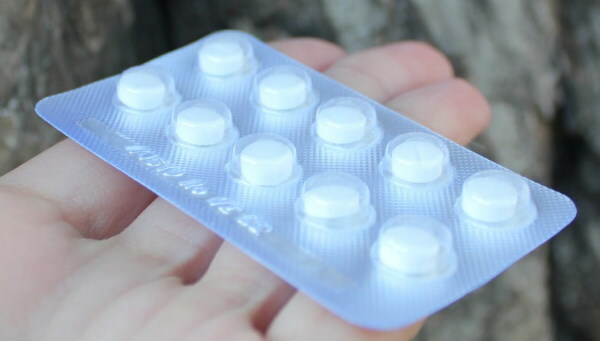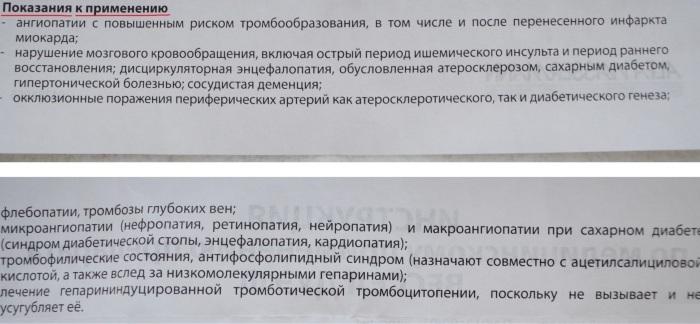In women the disease is diagnosed 3 times more often than men. Pathology develops in people of any age, even in children (juvenile rheumatoid arthritis), but the peak age of 40-50 years. The incidence of disease is 5.2% for women and 2.5% for men. The International Classification of Diseases 10 revision (ICD-10) this pathology code M05 is assigned.

What it is?
Rheumatoid arthritis - is a systemic disease of the connective tissue with a primary lesion of the small joints of the type of erosive and destructive polyarthritis of unknown etiology with the complex autoimmune pathogenesis.
Causes of
The exact factors that contribute to the appearance of rheumatoid arthritis have not been established. The presumed causes of rheumatoid arthritis:
- a weakened immune system and allergies;
- obesity;
- diseases of liver and kidneys;
- various injuries, operations history;
- viruses and bacteria (latent infection);
- stress and long-term depression;
- overdose of hormonal preparations;
- bad habits;
- heredity.
Whichever factor did not cause the disease, it will necessarily entail a violation of the immune system.
Pathogenesis
Rheumatoid arthritis specialists relates to autoimmune diseases. For this group of diseases characterized by the conduct of defense cells - the lymphocytes. They, instead, to actively diagnose alien bacteria, fungi, viruses, and destroy them, begin to attack its own healthy cells.
This pathological process violations interaction of immune system cells in the immune response consists of the following steps:
- Synoviocytes acquire features of macrophages secrete pro-inflammatory cytokines, especially necrosis factor tumor alpha, interleukin 1, and become antigen presenting cells causes the activation of T helper 1 type.
- The cells of the synovial fluid and synovial sheath there is a large number of T-helper cells type 1, gamma interferon emitting and activating macrophages.
- Activated macrophages and monocytes produce provospali-Tel'nykh cytokines: tumor necrosis factor alpha, IL-1, IL-6.
- Increase of IL-8 in the synovial fluid concentration causes a high concentration therein neutrophils.
- IL-1 induces fever, activation of osteoclasts, which contributes to osteoporosis, subchondral bone plate. Tumor necrosis factor causes adhesion molecules on the endothelial surface, promoting exudation, causes weight loss, anemia of chronic inflammation. I16, activating hepatocytes, causes an increase in the production of C-reactive protein; activates B lymphocytes (turning them into plasma cells).
- In the blood significantly increases the concentration of plasma cells producing immunoglobulins.
- In the blood and synovial fluid of patients with 80% dramatically increased the concentration IgM and IgG Fc portion to the modified IgG (rheumatoid factors).
- Isolation endothelial growth factor promotes proliferation of synovial tissue capillaries. Angioneogenez and active proliferation of fibroblasts, synoviocytes lead to pannus formation - aggressive tissue having signs of tumor growth, the ability to integrate into the cartilage, the articular surface of the bone, forming the erosion, and ligament apparatus. It is important to note that the components of pannus clone breeding uncontrollably aggressive synoviocytes formed relatively late - after a few months of onset.
- The formation of immune complexes in the blood as a result of interaction with IgG rheumatoid factors leads to complement activation, and damage to the microvasculature, which explains the visceral manifestations of rheumatoid arthritis. At late stages of rheumatoid arthritis proliferative processes (pannus growth) can not depend on autoimmune mechanisms are supported and autonomously.

Symptoms of rheumatoid arthritis
Rheumatoid pathology manifests itself is limited (joint disease) and systemic (organ damage). Rheumatoid arthritis symptoms develop gradually, to systemic manifestations take months, sometimes years. However, frequent and severe forms, when the condition worsens lightning.
Extra-articular symptoms:
- vascular pathology - atherosclerosis, vasculitis;
- blood diseases - thrombocytosis, anemia;
- renal pathology - glomerulonephritis;
- atrophy of the muscles attached to the affected joints;
- respiratory diseases - pleurisy, Interstitial pneumonia;
- Pathology of the heart - inflammation of the membranes (from the pericardium to the myocardium), valve failure;
- LCD pathology - flatulence, epigastric pain, rarely enlarged liver;
- nerve damage - neuropathy, cervical myelitis, mononeuritis;
- visual pathology - scleritis, ulcerative keratopathy, keratoconjunctivitis sicca;
- the defeat of the salivary glands;
- rheumatoid nodules - painful, dense skin formation located on a diameter of 2 cm, possibly their occurrence in internal organs (nodes not soldered to surrounding tissues, mobile).
Joint symptoms:
- Local temperature increase;
- symmetrical joint disease;
- Pain was initially reduced at low loads (unlike osteoarthritis);
- Articular Syndrome - morning stiffness of joints affected, continuing until 1 hour .;
- pain worse late at night, towards morning (monotonic character, similar to a toothache);
- favorite localization of pathologies in II and III (the index and ring fingers) metacarpophalangeal (protruding compressive hand into a fist), the proximal interphalangeal (Further from the middle of the body), less wrist and knee, elbow and ankle joints (exception - metacarpophalangeal thumb and distal interphalangeal).
The defeat of the periarticular tissues manifested bursitis, tenosynovitis, abnormal mobility, leading to subluxation. With the development of the pathology and deformed joints increases arise contraction:
- atlas subluxation (I vertebra);
- coxarthrosis - claudication due to lesions of the hip joint;
- perstnecherpalovidnogo joint deformation - rough voice, trouble swallowing;
- revmatoidnayadeformatsiya brush - "swan neck", "fin walrus", spindly fingers, "hand a lorgnette";
- rheumatoid foot - deformed thumb;
- rheumatoid knee - Baker's cyst.
General symptoms:
- enlarged lymph nodes without apparent reason;
- low-grade fever (slight hyperthermia);
- weakness;
- loss of appetite, weight loss.
Specific forms of rheumatoid arthritis:
- Juvenile arthritis - begins before the age of 16, usually affects the large joints.
- Felty's syndrome - a polyarthritis in the background increases the spleen.
- Still's syndrome - a high fever, a characteristic rash.
- Oligo, monoartrit - the defeat of the large joints, usually the knee.
- Psvedoseptichesky arthritis - predominance of systemic symptoms with severe malaise and fever.
Periods of improvement can last up to 2 years, but the disease reasserts itself more pronounced.
Diagnosis of Rheumatoid Arthritis
In 1997, the American College of Rheumatology diagnostic criteria have been proposed for rheumatoid arthritis, which are relevant to this day.
In identifying the 4 out of 7 of these criteria the diagnosis is considered valid:
- Rheumatoid nodules.
- Positive rheumatoid factor.
- Morning stiffness of the joints, which lasts more than 1 hour for 6 weeks.
- Defeat three or more joints.
- The defeat of the hand joints.
- The characteristic radiographic changes.
- The symmetry of defeat, that is a disease of the joints of the same on the left and the right.
But, unfortunately, these features can be found only in the later stages of the disease. Therefore, the appearance of symptoms of morning stiffness, swelling or soreness in the joints brush is recommended as soon as possible address to the rheumatologist. Early forms of rheumatoid arthritis is much better to treat.
The following changes are identified in laboratory assays:
- In blood test: reduction in the concentration of hemoglobin and reduction in the number of erythrocytes, thrombocytes amid accelerated ESR (erythrocyte sedimentation rate). In addition, patients with rheumatoid arthritis increasing concentration of inflammatory factors, such as C-reactive protein, gamma globulin.
- Noteworthy is the presence of rheumatoid factor in the blood. Rheumatoid factor - is a special substance, which is released by the immune system to fight the joint theca cells. Identification of this indicator in the blood speaks not only about the presence of rheumatoid arthritis, but also characterizes the degree of activity of the process.
Of fundamental importance for the diagnosis of rheumatoid arthritis is joint radiography usually joints of the hands and feet. Narrowing of joint cracks and signs of bone loss in areas adjacent to the joint, speaks in favor of rheumatoid arthritis.

Rheumatoid arthritis in its initial stage
medication
Because the exact cause of rheumatoid arthritis is not detected, the treatment of the disease is reduced to carrying out symptomatic treatment and prevent further progression of the deformation joints.
Drugs in rheumatoid arthritis selects the physician, depending on the clinical picture of the disease:
- Basic drugs. Basic drugs for the treatment of rheumatoid arthritis (sulfasalazine, methotrexate, aminohinolinovogo drugs, leflunomide, azathioprine, cyclophosphamide, cyclosporine, Remicade, timodipressin etc) in combination with hormones help to reduce the activity of rheumatoid arthritis. Treatment of basic drugs are prescribed for a term not exceeding 6 months. There are five basic groups of drugs for the treatment of rheumatoid arthritis: drugs of gold, cytostatics, anti-malarial drugs, sulfonamides, and D-penicillamine.
- NSAIDs. NSAIDs (diclofenac, ibuprofen, nimesil, movalis, indomethacin, nonsteroidal anti-list) have anti effect, these drugs inhibit the activity of an enzyme that causes destruction of articular cartilage, reduce inflammation and reduce the signs of pain joints. NSAIDs should be prescribed with caution, with prolonged use, and the combined use of several drugs in this group significantly increased risk of side effects.
- Biological agents. Biologicals (halofuginone, etanercept, Humira, Actemra, rituximab, Lorentz) are protein-based, they are developed through genetic engineering. Their main purpose is also a suppression of inflammation due to effects on specific components of the human immune system.
- GCS. Glyukokokrtikosteroidy (hormones) (prednisolone, dexamethasone, methylprednisolone, triamtsinolol) are assigned to both the presence of systemic manifestations of the disease, and in their absence. Today, the treatment of rheumatoid arthritis treatment practice and small and large doses of hormones (pulse therapy). Corticosteroids perfectly cropped pain.
The latest generation of drugs against rheumatoid arthritis are drugs, selectively reducing inflammatory activity of substances in the body: interleukins, tumor necrosis factor (TNF) and others. They have proven to be effective not only in the pharmacological tests, but in actual clinical practice. Another advantage is their rare occurrence of adverse reactions.
The main representative of this group of drugs:
- Infliximab (synonyms - Remicade, Flammegis);
- Etanercept (synonym - Enbrel);
- Adalimumab.
Why these drugs are not widely used? The point is price. 20 ml of the product cost, an average of 45000-50000 thousand. rub. It can afford not every hospital or the patient.

Rheumatoid arthritis: launched form
Physiotherapy
Physiotherapy treatment methods:
- Laser therapy;
- ultrasound treatment;
- inductothermy;
- Treatment with pulse currents;
- Ultraviolet irradiation;
- Electrophoresis with medicinal drugs;
- Mud therapy;
- Paraffin and other physiotherapy techniques.
Physiotherapy techniques provide an effective therapeutic effect at the beginning of the disease, and in addition to this - during the rehabilitation period.
The consequences and complications of rheumatoid arthritis
The consequences of rheumatoid arthritis depends on timely diagnosis and treatment of specific purpose, by the degree of activity of the process and the embodiment of its course, on the presence of internal injuries and comply with all medical recommendations.
Very often, because of gross deformities of the joints, patients become disabled, significantly reduced quality of life. In the case of accession of extra-articular lesions may develop cardiac, pulmonary, renal failure, which can become a cause of death. Significantly increases the risk of fatal cardiovascular events (heart attack, stroke).
Because of the need to constantly take hormones, non-steroidal anti-inflammatory and cytotoxic agents develop severe side effects of drug therapy.

prevention
Prevention of the disease typically represented includes preventing and eliminating factors launchers disease. These include the presence of in the body hidden permanent foci of infection (sinusitis, dental caries, tonsillitis), prolonged stress, bad habits, hypothermia. Of particular importance it acquires, if there are hereditary risk, and in case of detection of rheumatoid factor, but no clinical symptoms of disease.
Forecast
Rheumatoid arthritis refers to a disease with a poor prognosis. This means that, in spite of treatment, to achieve a full recovery is not possible. In addition, treatments for their extremely high toxicity.
The life expectancy of patients with rheumatoid arthritis by an average of 5-10 years less than the general population. In these patients, due to the constant chronic inflammation are at increased risk of sudden cardiovascular death, internal bleeding, infectious complications.



